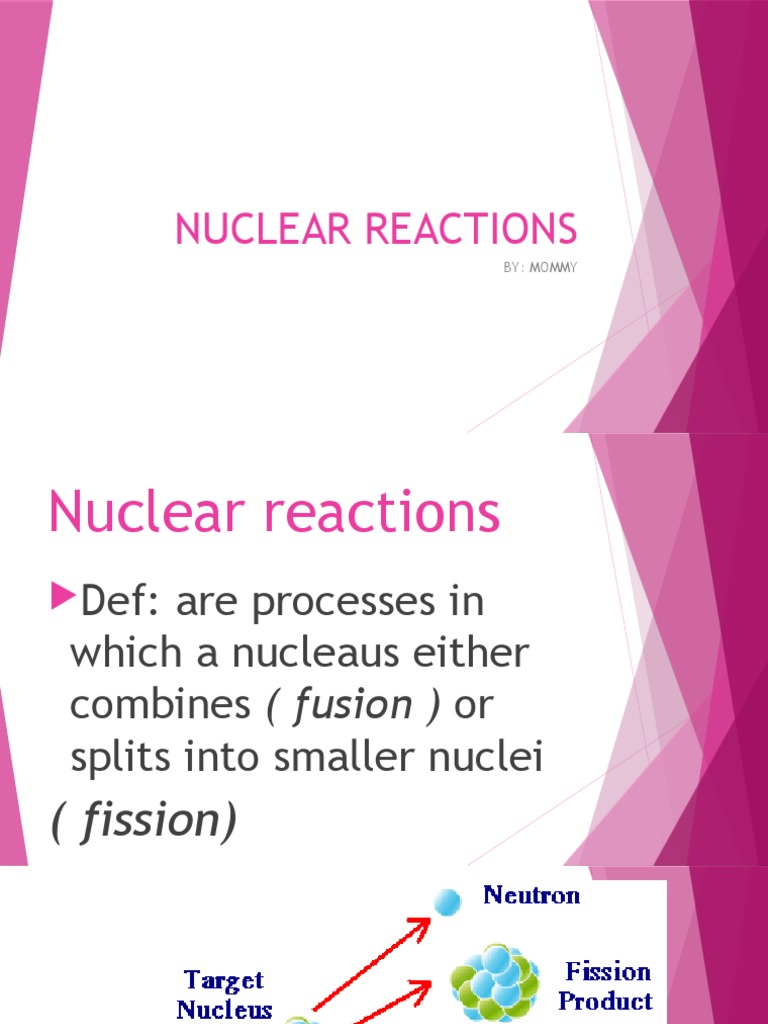The enigmatic processes occurring within the nucleus of an atom are the foundation of nuclear reactions, which encompass a range of phenomena from the fusion that powers the stars to the fission that fuels our nuclear reactors. Understanding what transpires during these reactions necessitates a deep dive into the realm of atomic interactions, where forces and particles dance in intricate patterns governed by the laws of physics. This exploration reveals not only the mechanics of the reactions themselves but also the profound implications they hold for energy production, medical advancements, and even the dynamics of our universe.
At its core, a nuclear reaction involves a change in the structure of an atomic nucleus, which can be instigated by various means, including the absorption of a neutron or the collision of nuclei at high energies. When nuclei interact, they may combine (fusion), split apart (fission), or undergo radioactive decay, yielding an array of reaction byproducts, including other particles, radiation, and energy. Each of these processes is governed by the fundamental forces of nature, particularly the strong nuclear force, which binds protons and neutrons together, and the weak nuclear force, responsible for certain types of radioactive decay.
The fascination with nuclear reactions is partly derived from their energetic outcomes. For instance, a single fission event can release millions of electronvolts, orders of magnitude greater than chemical reactions. The energy released in fusion reactions is what fuels the sun and stars, producing light and warmth that sustains life on Earth. Conversely, fission reactions, while harnessed for energy production in nuclear reactors, have also been responsible for catastrophic events in human history, such as nuclear weapons explosions. This juxtaposition of creation and destruction underscores the profound duality inherent in nuclear processes.
Fusion, the process by which light nuclei combine to form a heavier nucleus, serves as a prime example of this duality. In the sun, four hydrogen nuclei undergo fusion to create helium, releasing vast amounts of energy that illuminate and heat our planet. The conditions necessary for fusion—extreme temperatures and pressures—are found in stellar cores, where gravitational forces dominate. On Earth, scientists are striving to replicate these conditions within controlled environments, as achieving sustainable fusion would provide a virtually inexhaustible energy source with minimal environmental impact.
Conversely, nuclear fission involves the splitting of heavy nuclei, typically uranium-235 or plutonium-239, into lighter elements, a process that not only releases energy but also produces additional neutrons. These emitted neutrons can further induce fission in nearby nuclei, leading to a chain reaction. This characteristic is what allows fission to be harnessed in nuclear reactors, where the controlled moderation of the chain reaction produces a steady output of energy. However, the danger lies in uncontrolled fission, as seen in nuclear meltdowns, which can result in catastrophic releases of radiation and vast environmental damage.
In addition to energy production, nuclear reactions play an integral role in medicine, particularly in diagnostic imaging and cancer treatment. Radiotherapy utilizes the principles of nuclear decay, employing isotopes that emit radiation to target and destroy malignant cells. Furthermore, techniques like positron emission tomography (PET) scans exploit the behavior of radioactive isotopes to visualize internal body processes, demonstrating the utility of nuclear reactions beyond mere energy generation.
As society grapples with the implications of nuclear technology, the underlying physics of nuclear reactions invites deeper contemplation. The concept of binding energy, defined as the energy required to disassemble a nucleus into its constituent protons and neutrons, reveals why certain nuclei are more stable than others. The balance between the attractive strong nuclear force and the repulsive electromagnetic force between protons determines the stability and behavior of a nucleus, elucidating the conditions under which nuclear reactions occur.
Moreover, nuclear reactions are at the heart of the synthesis of elements in the cosmos. Through nucleosynthesis, elements heavier than hydrogen are forged within stars via fusion processes. The explosive deaths of massive stars in supernovae events scatter these newly formed elements across the universe, seeding planets and, consequently, life itself. This stellar alchemy not only enhances our understanding of the universe’s history but also illustrates the interconnectedness of cosmic phenomena and the very essence of existence on Earth.
Despite the advancements that have been made in nuclear science, the quest to understand nuclear reactions continues to progress. Researchers are delving into the realms of particle physics, exploring the properties of fundamental particles such as quarks and gluons, which constitute protons and neutrons. Advancements in experimental techniques and theoretical frameworks promise to unravel the remaining mysteries that shroud nuclear interactions, potentially leading to breakthroughs in energy and medicine.
In conclusion, what happens in a nuclear reaction is not merely a matter of energetic exchanges or particle collisions; it encompasses a grand narrative woven into the fabric of the universe. From the fusion that ignites stars to the fission that provides power, nuclear reactions are a testament to nature’s complexities and a source of both awe and caution in equal measure. As we harness the power of nuclear interactions, the responsibility to respect and understand their potential consequences is paramount, guiding humanity in its pursuit of knowledge and advancement. The intricate dance of atomic particles is not just a scientific endeavor; it is a profound exploration of the forces that shape our universe and our future.












